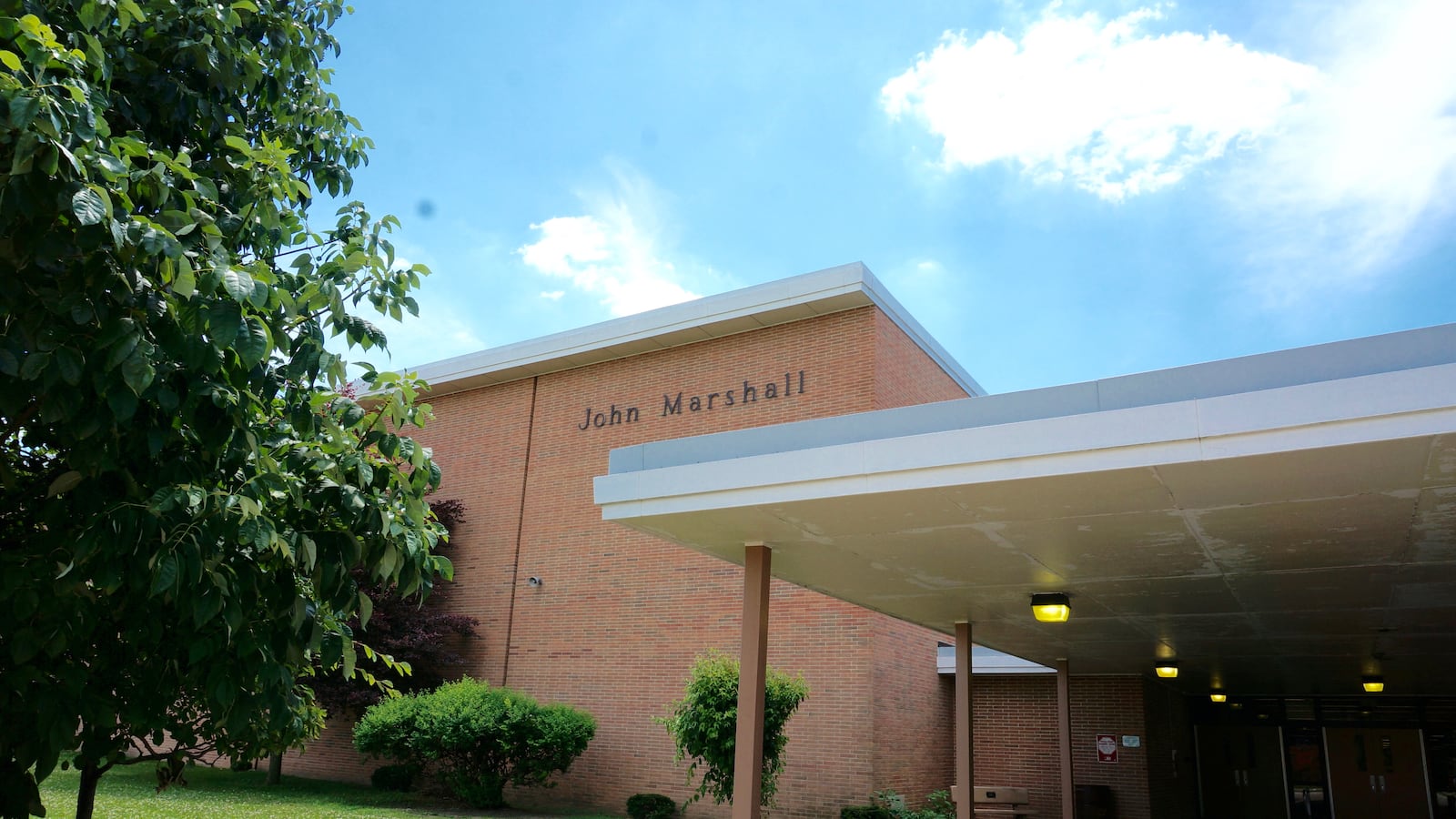Whenever Cassandra Money walked out of chemistry class at John Marshall Community High School last year, she noticed something unusual about the hallway: There was just a handful of teens loitering and chatting, with none of the commotion of a typical high school.
It was great for reaching her next class quickly.
“In an empty hallway you can get to your class on time,” said Money, a rising junior at Marshall.
But the quiet corridors are not great for her school.
They’re a small sign of a problem plaguing Indianapolis Public Schools. Numbers obtained by Chalkbeat reveal that the district has more than twice as many seats in secondary schools as it has students to fill them. Those extra seats come at a price, because schools that are just a quarter full still bear high costs for services like heating, security and maintenance throughout the building.
With the district in the process of planning a massive school reconfiguration designed to remove middle schoolers from high schools, the board must decide whether to close some of the underused buildings to save costs.
At least one board member believes that now is the time for the district to begin closing high schools.
“It’s gonna be really painful,” said board member Kelly Bentley. “But we have to make those tough decisions. And we can’t continually shy away from making those tough decisions.”
IPS planning supervisor Tricia Frye said that ideally, schools should be at about 85 percent of their capacity so they have space to use some rooms for other purposes like a parent center.
Crispus Attucks is the only IPS high school that is close to meeting the 85 percent utilization goal. Six of the district’s eight high schools serve fewer than half the number of students they could.
IPS High School Enrollment
Create bar chartsAt Marshall, there’s enough room for 1,650 students, but last year, the school enrolled just 694 kids, according to district data. That’s one reason the cost of educating students at Marshall is particularly high. In 2014-2015, IPS spent about $10,369 per student at Marshall. At Crispus Attucks, the cost was just $5,530.
The district has not yet released the details of how that money is spent, but officials say that at least part of reason why some schools are so much more expensive per student than others is because of the high costs of running underused buildings.
The problem could become more urgent as the district reconfigures middle school education. Marshall is one of several IPS high schools that serve middle school children in addition to students in grades 9-12. Superintendent Lewis Ferebee has committed to moving those kids to K-8 elementary schools or standalone middle schools in a bid to improve academic results for middle school students.
That move would reduce the high school population by about 2,033 middle school students, exacerbating problems with enrollment. But since there is not enough room to accommodate those students in the existing IPS elementary schools, the reconfiguration also offers the district an opportunity to repurpose some high school buildings as middle schools instead of closing them altogether.
Last month, Deputy Superintendent Wanda Legrand confirmed that one option for Marshall, which has long-struggled on state tests, could be converting it to a dedicated middle school.
But Legrand is close lipped about whether the district also will need to shut down high schools, although she said it is a potential option going forward.
“We are not going in to this conversation saying we are closing 10 buildings or any buildings at all,” she said. “Our conversation now and our work now isn’t about closing schools. Our conversation is finding places for our middle years kids.”
School Board President Mary Ann Sullivan said underutilization may force the board to close high schools but raised the possibility that some high school buildings could be kept open through strategies such as sharing school buildings with other organizations.
It’s a model that’s being tested in the Gambold building on the northwest side, which houses the Enlace Academy charter school and the IPS newcomer school.
Bentley said the district needs to be financially responsible when it comes to deciding whether to close high schools.
“The ultimate goal is to do what’s in the best interest of families and taxpayers and kids,” Bentley said. “Right now, operating these high schools isn’t in anybody’s best interest. It just isn’t.”

